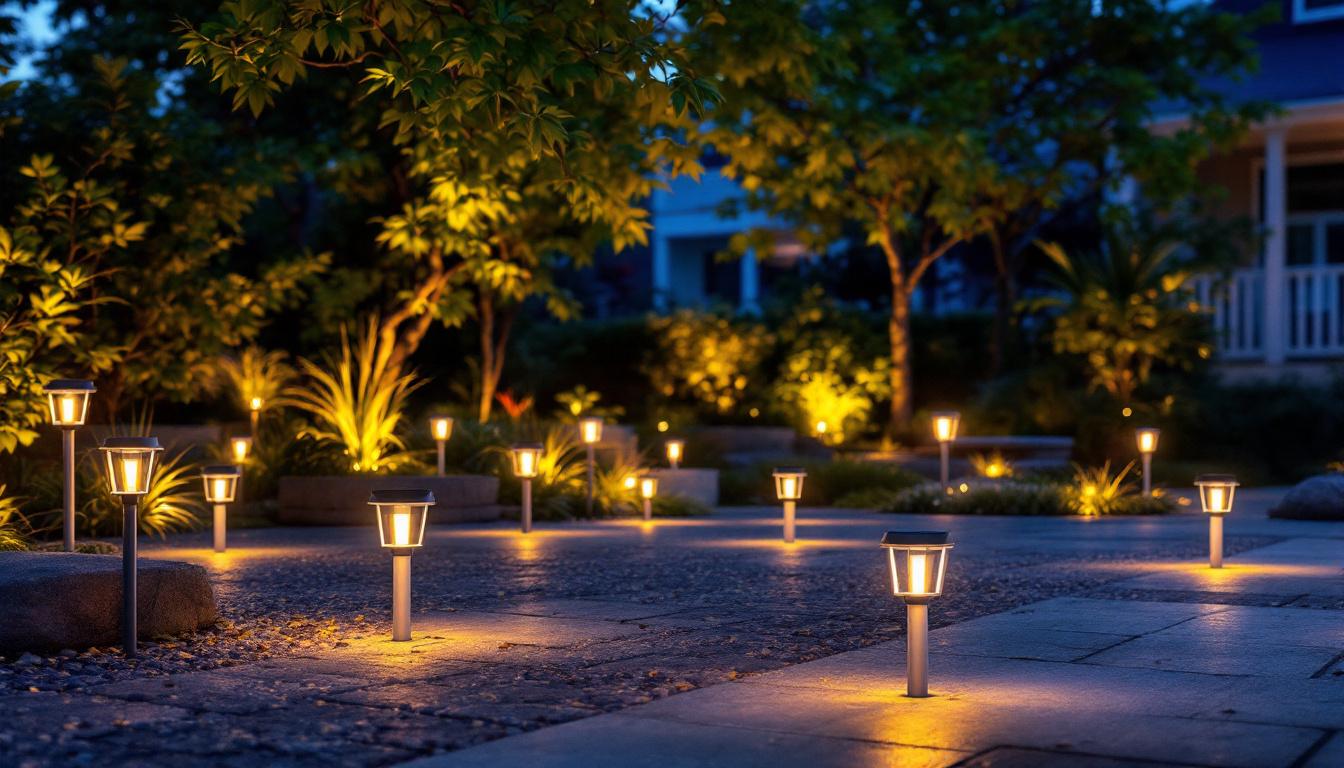
In the world of lighting, shop lights play a crucial role in creating an efficient and productive workspace. For lighting contractors, understanding the nuances of shop lighting can significantly enhance the quality of installations and customer satisfaction. This article provides quick tips and insights that can help lighting contractors optimize their shop lighting solutions.
Before diving into specific products or installation techniques, it’s essential to assess the unique lighting needs of each shop. Factors such as the type of work being performed, the size of the space, and the desired ambiance all play a role in determining the best lighting solutions.
Every shop has its distinct characteristics that influence lighting requirements. For instance, a mechanic’s shop may require bright, focused lighting to illuminate work areas, while a woodworking shop may benefit from softer, diffused lighting to reduce shadows. Conducting a thorough assessment of the workspace can help identify these needs.
Consider the layout of the shop as well. Open spaces may require different lighting strategies compared to smaller, enclosed areas. Additionally, take note of any existing natural light sources, as they can impact the overall lighting design. Utilizing skylights or large windows can significantly enhance the natural illumination, reducing the need for artificial lighting during daylight hours. Furthermore, the color of the walls and floors can also affect how light is perceived in the space; lighter colors tend to reflect more light, creating a brighter environment, while darker colors may absorb light and necessitate more powerful fixtures.
Different tasks require varying levels of illumination. For instance, detailed assembly work may necessitate brighter, more focused lighting, while general maintenance tasks could be adequately served with softer ambient lighting. By identifying the primary tasks performed in the shop, contractors can tailor their lighting solutions to enhance productivity and safety.
Moreover, it’s crucial to consider the use of task lighting in conjunction with general lighting. Task lighting, such as adjustable LED lamps or under-cabinet lights, can provide the necessary brightness for intricate jobs without overwhelming the entire space. This layered approach not only improves visibility but also allows for flexibility in lighting based on the specific needs of the task at hand. Additionally, incorporating dimmable fixtures can further enhance the adaptability of the lighting scheme, allowing workers to adjust the intensity based on their preferences or the time of day.
Once the specific needs have been assessed, the next step is selecting the appropriate lighting fixtures. The market offers a wide array of options, each with its advantages and disadvantages. It’s essential to consider factors such as the purpose of the space, the ambiance desired, and the type of activities that will take place under the chosen lighting. For instance, a workshop may require bright, focused lighting to ensure safety and precision, while a retail space might benefit from softer, more inviting illumination to enhance the shopping experience.
There are several types of shop lights available, including fluorescent, LED, and halogen options. Fluorescent lights have been a staple in many shops due to their efficiency and cost-effectiveness. However, LED lights are rapidly becoming the preferred choice due to their longevity, energy efficiency, and reduced heat output. The lifespan of LED fixtures can exceed 25,000 hours, which translates to less frequent replacements and maintenance, making them a practical choice for busy environments.
Halogen lights, while providing excellent color rendering and brightness, tend to consume more energy and generate more heat. When selecting fixtures, consider the specific application and the long-term costs associated with each type of lighting. For example, in areas where tasks require high visibility, such as assembly lines or detailed workstations, investing in high-quality LED lights could enhance productivity and reduce eye strain for employees. Additionally, the aesthetic appeal of various fixtures can also play a role in creating a cohesive design throughout the space.
Energy efficiency is a crucial factor in modern lighting design. LED lights, for instance, consume significantly less power than traditional incandescent or fluorescent lights, leading to lower electricity bills and a reduced carbon footprint. Additionally, many municipalities offer incentives for businesses that upgrade to energy-efficient lighting, making it a financially sound choice. These incentives can range from rebates on the purchase of new fixtures to tax credits, which can further offset initial investment costs.
When advising clients, emphasize the long-term savings associated with energy-efficient fixtures. This not only benefits their bottom line but also contributes to a more sustainable environment. Moreover, the advancements in smart lighting technology allow for even greater control over energy consumption. Features such as motion sensors, dimmers, and programmable schedules can optimize lighting use based on occupancy and time of day, ensuring that lights are only on when needed. This level of control not only enhances energy savings but also provides flexibility in adapting the lighting to various tasks and moods throughout the day.
Proper installation is key to ensuring that shop lights function effectively and efficiently. Lighting contractors should adhere to best practices to maximize the performance of the fixtures.
The positioning and spacing of lighting fixtures can significantly impact the overall effectiveness of the lighting design. Fixtures should be strategically placed to minimize shadows and ensure even illumination across the workspace. A common guideline is to space fixtures approximately 4 to 6 feet apart, depending on the type of light and the height of the ceiling.
Additionally, consider the height at which the fixtures will be mounted. Higher ceilings may require more powerful fixtures or additional units to achieve adequate lighting levels. Always refer to manufacturer specifications for optimal installation guidelines. Furthermore, it is essential to take into account the specific tasks being performed in the space. For instance, areas designated for intricate work, such as assembly lines or detailed inspections, may benefit from closer fixture placement to enhance visibility and reduce eye strain for workers.
Safety should always be a priority during installation. Ensure that all wiring is up to code and that fixtures are securely mounted. Use appropriate circuit breakers and fuses to prevent overloads. It’s also advisable to incorporate emergency lighting solutions in case of power outages, ensuring that workers can safely navigate the space.
Regular maintenance checks should be scheduled to ensure that all electrical components are functioning correctly. This not only enhances safety but also prolongs the lifespan of the lighting fixtures. In addition to routine inspections, it is beneficial to keep a log of any maintenance performed, including bulb replacements and wiring checks. This documentation can help identify patterns or recurring issues, allowing for proactive measures to be taken before they escalate into larger problems. Moreover, training staff on basic safety protocols related to lighting maintenance can foster a culture of safety and awareness in the workplace, ultimately contributing to a more efficient and secure environment for all employees.
Incorporating lighting controls can significantly enhance the functionality and efficiency of shop lighting. These controls allow for greater flexibility and can lead to substantial energy savings.
Dimmer switches enable users to adjust the brightness of the lights according to their needs, which can be particularly useful in multi-purpose shops. For instance, during detailed work, brighter lighting may be necessary, while general tasks may require softer illumination.
Timers can also be beneficial, automatically turning lights on and off based on the shop’s operating hours. This not only conserves energy but also ensures that lights are not left on unnecessarily, reducing wear on the fixtures.
Advancements in technology have led to the emergence of smart lighting solutions, which can be controlled via smartphones or voice commands. These systems offer unparalleled convenience, allowing users to adjust lighting levels remotely or set schedules for automated operation.
Smart lighting can also integrate with other systems, such as security and HVAC, creating a more cohesive and efficient shop environment. As technology continues to evolve, staying informed about the latest advancements can provide a competitive edge in the marketplace.
Regular maintenance is essential to ensure that shop lights continue to perform optimally over time. Neglecting maintenance can lead to reduced efficiency and increased costs.
Conducting routine inspections of lighting fixtures can help identify any issues before they escalate. Check for signs of wear, such as flickering lights or discoloration, which may indicate that a bulb needs replacing or that a fixture requires cleaning.
Additionally, inspect wiring and connections to ensure there are no loose or damaged components. Keeping a maintenance schedule can help ensure that all aspects of the lighting system are regularly checked and maintained.
Dust and grime can accumulate on fixtures, reducing their effectiveness. Regular cleaning can help maintain brightness and efficiency. Use appropriate cleaning solutions and methods that won’t damage the fixtures or affect their performance.
For high ceilings, consider using professional cleaning services or equipment to ensure that all fixtures are accessible and adequately maintained. Keeping lights clean not only enhances their performance but also contributes to a more pleasant working environment.
Effective shop lighting is a critical component of any successful workspace. By understanding the unique needs of each shop, selecting the right fixtures, adhering to installation best practices, and implementing maintenance routines, lighting contractors can significantly enhance the quality of their lighting solutions.
Incorporating energy-efficient options and advanced controls can further improve functionality and sustainability. By staying informed about the latest trends and technologies, lighting contractors can provide exceptional service to their clients and create well-lit, productive environments.
Ultimately, the goal is to create an efficient, safe, and pleasant workspace that meets the diverse needs of shop operations. With these quick tips, lighting contractors can navigate the complexities of shop lighting with confidence and expertise.
Ready to elevate your lighting game? Look no further than LumenWholesale for a superior selection of spec-grade lighting products. Our commitment to quality and affordability ensures that you get the most reliable and high-performance lighting solutions for your shop projects. With unbeatable wholesale prices and the convenience of free shipping on bulk orders, you can trust us to light up your workspace without the extra costs. Don’t compromise on quality or value; choose Wholesale Lighting at the Best Value and make your next installation shine with LumenWholesale.

Discover how using an F150Leds promo code can illuminate your lighting contracting business.

Explore the essential compliance guidelines for yard solar lights that every lighting contractor should know.

Discover how high-quality solar lights can transform your business and secure more lighting contracts.

Discover how integrating outlet switch combos can revolutionize your lighting contracting business.